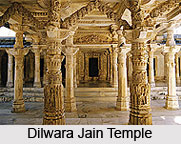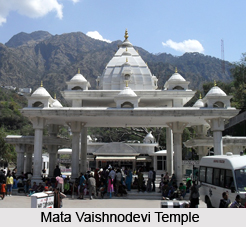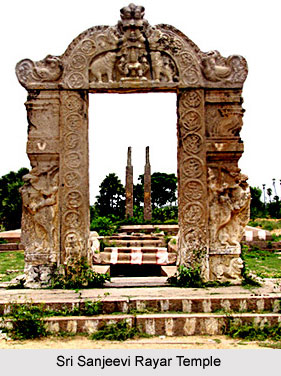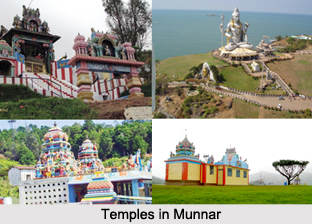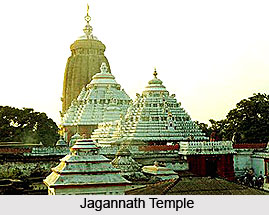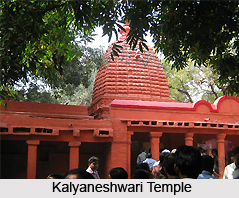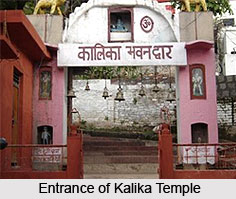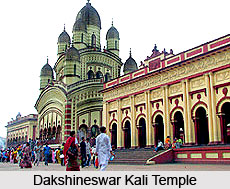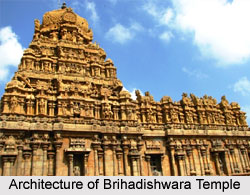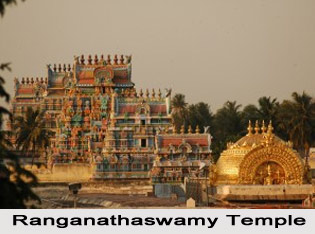 Sri Ranganatha Svami temple is one of the significant temples in Tamil Nadu dedicated to Lord sri Sudarshana. The sacred temple is visited by innumerable worshippers` everyday. The entire sanctum of Sri Ranganatha Svami temple is east facing. The image of Sri Sudarsana enshrined in the main sanctum is a splendid icon, and also served as the chief interest for the tourists. The deity is worshipped for years by His devotees who come to seek His blessings and get their wishes fulfilled. The deity, Sri Sudarshana is also highly venerated. The backside of the Sudarsana Chakra bears the exquisite image of Lord Arasimha. The image of Lord Arasimha is erected in such a way that it can be seen from the rear door of this shrine. This view has enhanced the picturesque vista of the temple. The entire sanctum of Sri Ranganatha temple houses several sub shrines. This very vast temple-complex, the Sudarsana shrine consists not only of the main sanctum sanctorum or garbha-griha, but also there is a passage in front, which is called anatarala. This passage of anatarala leads to the mukha-mandapa and then the maha-mandapa. Around the garbha-griha there is erected a pradakshina passage, which enhanced he artistic grandeur of the Sri Ranganatha Svami temple.
Sri Ranganatha Svami temple is one of the significant temples in Tamil Nadu dedicated to Lord sri Sudarshana. The sacred temple is visited by innumerable worshippers` everyday. The entire sanctum of Sri Ranganatha Svami temple is east facing. The image of Sri Sudarsana enshrined in the main sanctum is a splendid icon, and also served as the chief interest for the tourists. The deity is worshipped for years by His devotees who come to seek His blessings and get their wishes fulfilled. The deity, Sri Sudarshana is also highly venerated. The backside of the Sudarsana Chakra bears the exquisite image of Lord Arasimha. The image of Lord Arasimha is erected in such a way that it can be seen from the rear door of this shrine. This view has enhanced the picturesque vista of the temple. The entire sanctum of Sri Ranganatha temple houses several sub shrines. This very vast temple-complex, the Sudarsana shrine consists not only of the main sanctum sanctorum or garbha-griha, but also there is a passage in front, which is called anatarala. This passage of anatarala leads to the mukha-mandapa and then the maha-mandapa. Around the garbha-griha there is erected a pradakshina passage, which enhanced he artistic grandeur of the Sri Ranganatha Svami temple.
The numerous shrines inside the Ranganatha Svami temple testify the excellence of the architectural trend prevalent in the historic periods of many dynasties like the Chola, Pandya, Hoysala, Chera, Vijayanagar, Nayaka and many other big and small dynasties which ruled over the Tamil country at different periods of time. The inscriptions imprinted over the temple walls and other epigraphic records depict the contribution made by the celebrated kings for the purpose of architectural expansion and growth of this magnificent temple. The Chakrattazhvar shrine is no exception to this practice. The mukha-mandapa at the front side, has six rows of eight pillars each measuring approximately twenty feet, bears architectural features of the Chola and Vijayanagara times while the maha-mandapa has six rows of pillars supporting the ceiling, reveals the trend of Vijayanagara style. Thus the structural design of the temple is no less fascinating, which is an added grandeur to the traditionality of the temple.












